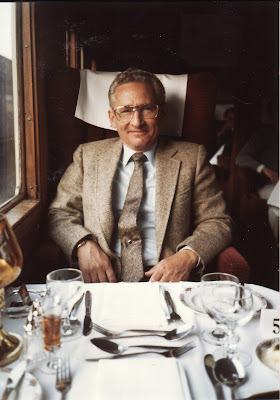Ah, serendipity. All by itself, the word strikes a pleasant note. We use it to mean the knack of making desirable discoveries by accident. Webster’s tells the first use of this word was by Horace Walpole (1717-92). In a letter to the American educator Horace Mann, Walpole said he formed it from the Persian fairy tale The Three Princes of Serendip, whose heroes "were always making discoveries, by accidents and sagacity, of things they were not in quest of." Serendip is an old name for Ceylon, now Sri Lanka.
Serendipity can’t be described as just dumb luck. The real secret to it is to be on the alert and ready for opportunities to do something different. My husband and I have had many serendipitous experiences in our travels. One fine May afternoon, way back when, after our first pub lunch and a lovely jaunt around southern England visiting Bodiam Castle, Battle (the Battle being the Battle of Hastings) and Rye, we got back to our base in Tenterden, Kent. We wandered off the High Street to the railroad station, part of the Kent and East Sussex Railway. We were admiring a lovely old train when we were approached by a charming man who asked us if we would like an adventure. Later we learned that the restoration and preservation of the light railway and its rolling stock was an entirely volunteer effort, and that part of their fund raising effort was to serve dinner in an authentically restored Pullman car. Here’s the serendipitous part: someone had had to cancel several bookings he’d made for dinner on the Wealden Pullman, and there were a few reservations on offer. We jumped at the chance.
Returning to our B & B to change into proper dinner attire, our host congratulated us on our fortune, admitting that he’d not yet had his own name come up on the waiting list. The bookings for this popular excursion, then run only on warm-weather Saturdays, were next to impossible to get. We understood why as the trip and the dinner progressed. Rolling serenely along through the countryside, seated at a table for two, we enjoyed a delicious four-course meal, served to perfection by perfectly-uniformed volunteer waiters, complete with aperitifs and wines, port and cigars. We passed on the cigars. It certainly was just by accident that we turned up at the railway station at the right time, and I don’t think it took too much sagacity to take the chance for a different dining experience: we had to have diner no matter what. The picture I took of Frank, seated across the table, shows a smile of absolute delight and contentment.
Serendipity was disembarking last from a cruise ship in Bergen, Norway, but finding ourselves first to be shown to a waiting taxi. Serendipity was arriving at the ornately Victorian Papplewick Pumping Station in Nottinghamshire on one of the few days in the year when they bring James Watt’s huge beam engines up to full, working steam. It was deciding to go to a bullfight in St. Remy-de-Provence, and finding ourselves at a wonderful, elaborately-costumed ceremony on what turned out to be the re-opening day of the refurbished arena.
Of course we’ve missed what might have been serendipitous moments by being there too late: “you should have been here last week,” or too early: “can you stay until next week when…comes to town?” But we never dwell on what we might have been. After all, it isn’t as though we were sitting idly, twiddling our thumbs and waiting for things to happen. No, we’ve been very serendipitous in that respect.



